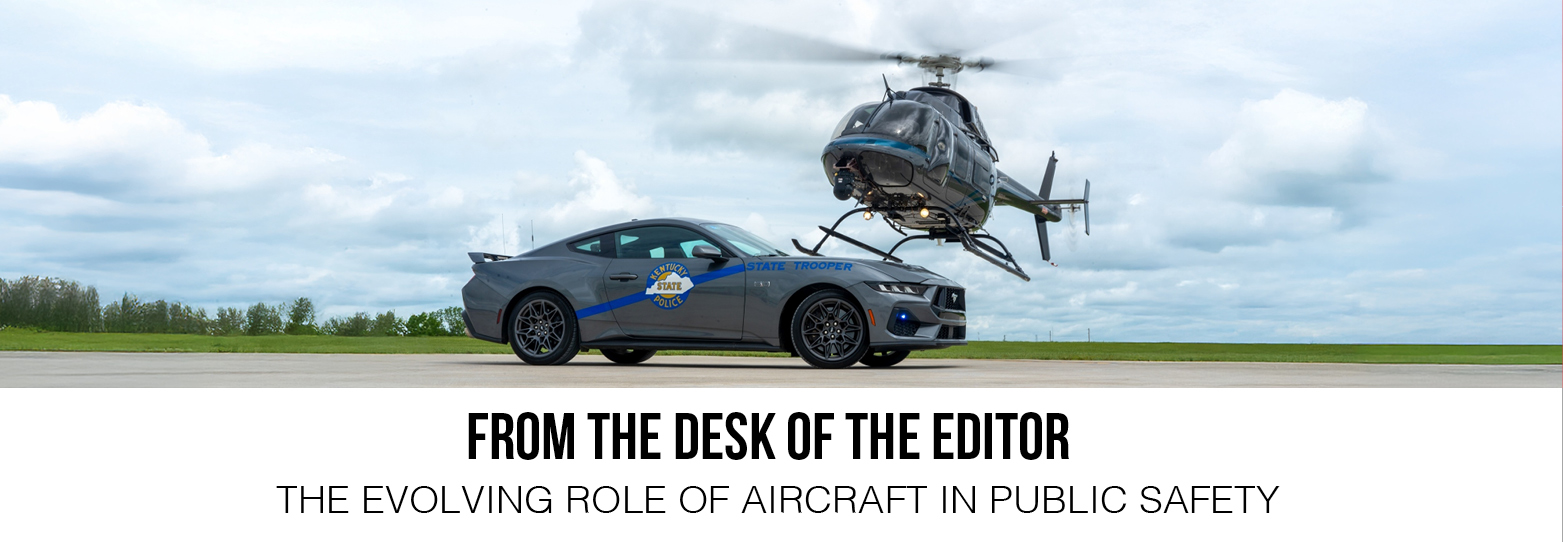|
Jun
29
2025
|
|
Posted 183 days ago ago by Admin
|
|

As editor of Rotor Pro, I'm excited to share our insights into the dynamic landscape of vertical lift in public safety. The sector is undergoing a profound transformation, driven by technological advancements and evolving operational demands.
Traditionally, helicopters have been the workhorses of airborne law enforcement by providing unparalleled situational awareness, rapid response capabilities and a crucial eye in the sky for pursuits, search and rescue, and disaster response. Our cover feature on Flagler County FireFlight highlights one small operator that has adapted to multiple-missions in order to meet the operational demands of protecting its citizens and property.
Innovations in camera technology, mission-management systems, and real-time data downlink capabilities have significantly enhanced the effectiveness of aviation units, transforming them into airborne command and intelligence-gathering platforms. Agencies are increasingly investing in aircraft with extended endurance and all-weather capabilities, ensuring longer on-station times and operational reliability.
As you will see by the article that begins on page 66, the vertical-lift landscape is also being reshaped by the burgeoning presence of unmanned aerial systems (UAS) or drones. Drones offer distinct advantages, including lower operating costs, greater range for certain missions, and the ability to operate in environments too dangerous or inaccessible for manned aircraft. They are proving invaluable for initial scene assessment, crime scene documentation, crowd monitoring, and even as first responders in critical situations, enhancing officer safety and providing immediate situational awareness.
This evolution is bringing both opportunities and challenges. While drones offer cost-effective solutions for many tasks, they also raise concerns about privacy, data retention, and regulatory compliance. Manned aircraft, despite higher operational costs, continue to offer superior payload capacity, endurance, and the invaluable human element in complex, dynamic scenarios.
The future likely lies in a synergistic approach where manned and unmanned vertical-lift assets complement each other. Agencies will need to navigate tight budgets, a shrinking pool of qualified pilots, and public scrutiny while integrating these diverse capabilities. The focus will be on optimizing technology for enhanced situational awareness, improved response times, and ultimately, safer communities. The coming years promise continued innovation and adaptation as airborne public safety refines its vertical-lift strategies to meet the challenges of a complex world.
READ MAY/JUNE ISSUE OF ROTOR PRO
READ MORE ROTOR PRO: https://justhelicopters.com/Magazine
WATCH ROTOR PRO YOUTUBE CHANNEL: https://buff.ly/3Md0T3y
You can also find us on
Instagram - https://www.instagram.com/rotorpro1
Facebook - https://www.facebook.com/rotorpro1
Twitter - https://twitter.com/justhelicopters
LinkedIn - https://www.linkedin.com/company/rotorpro1